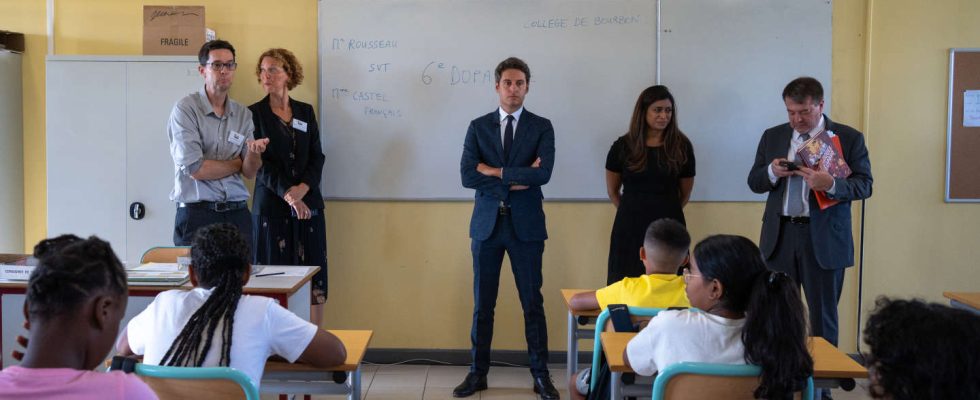And if the drop in the number of students breathed new life into a national education system in the doldrums? If 12 million students return to school on Monday, September 4, the school system should lose around 500,000 between 2022 and 2027: nearly 400,000 in the first degree and more than 100,000 in the second degree. Faced with this prospect, the government is on the verge of decisive choices for the learning conditions of pupils and the working conditions of teachers. He will, among other things, have to place the cursor between abolishing teaching posts and reducing the number of students per class.
With the number of births falling almost constantly since 2010, schools have already suffered from the phenomenon for almost ten years, but this reduction will accelerate in the coming years, according to the work of the Department of Evaluation, Forecasting and the performance of the Ministry of National Education. After a drop of 58,000 students between 2021 and 2022, the first degree expects to lose 73,000 students at the start of the 2023 school year, then 224,000 between 2024 and 2027. An unprecedented drop for at least forty years. These trajectories are looming for secondary education from 2024, particularly in middle school.
Education stakeholders are aware of this and are putting pressure on the Ministry of National Education to ensure that the drop in the number of students does not mathematically lead to massive job cuts. In this regard, the logic is far from always being respected: colleges and high schools have experienced job cuts in recent years while the number of students was rather increasing.
The FCPE is at the forefront on the subject. The parents’ federation launched a petition in February which collected nearly 76,000 signatures. She asks “the opening of a collective reflection” in order to “defining a shared national educational project”. “The demographic decline is an opportunity to be seized to allow all children and adolescents to experience an education allowing their development and their well-being”insists Grégoire Ensel, its president. “What public education service do we want? There is a choice of school to be made, a quantitative choice, but also a qualitative one, on the learning conditions of the pupils and the working conditions of the staff “abounds Elisabeth Allain-Moreno, general secretary of the SE-UNSA teachers’ union.
30 students per class in high school
The Court of Auditors, too, calls, in a note of July, to ” benefit “ of this demographic decline, a “major phenomenon” for national education. The body has made its calculations: this reduction in the number of students “should in principle lead to a corresponding drop in the number of teachers, of the order of 15,000 jobs between 2022 and 2027”, “in reality about 9,000 jobs” For “leave the ministry room for maneuver in its workforce management”.
You have 70.73% of this article left to read. The following is for subscribers only.

